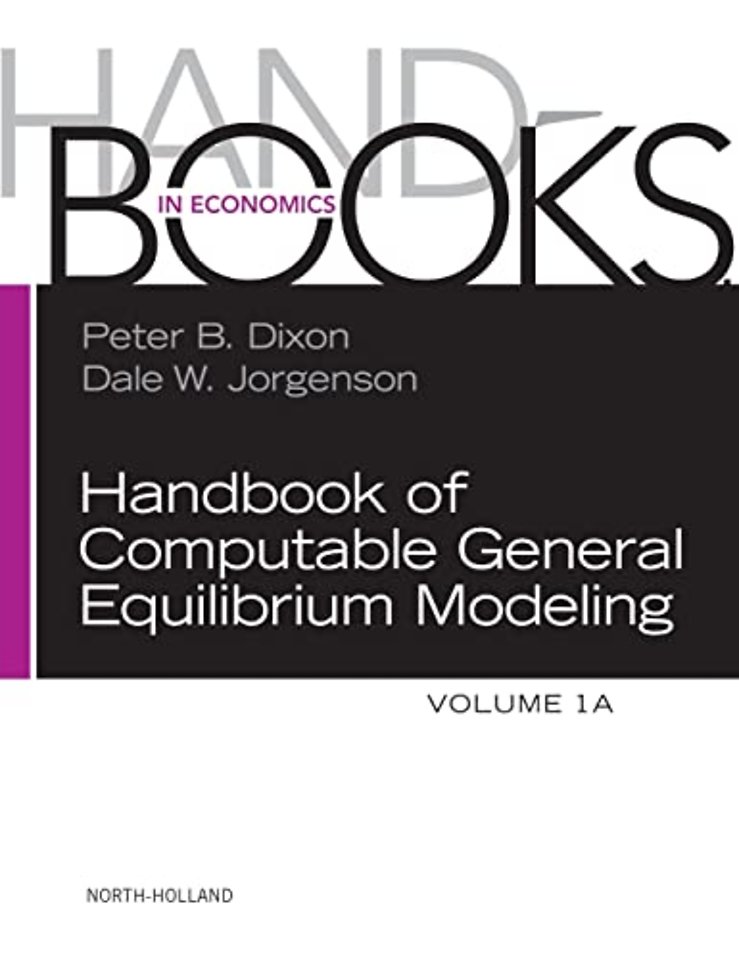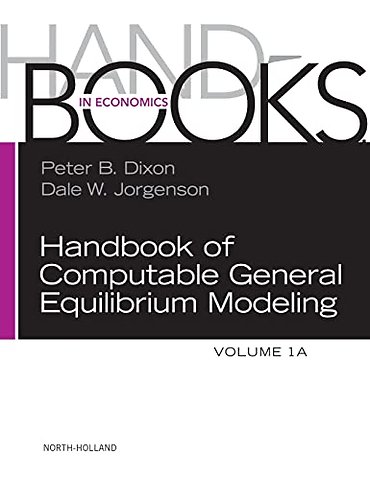<p>Section 1. Overview<br>1. An introduction to CGE modeling<br> Peter B. Dixon and Dale W. Jorgenson </p> <p>Section 2. Single-Country CGE Projects<br>2. The MONASH style of CGE modeling: a framework for hisorical, decomposition, forecast and policy simulations<br> Peter B. Dixon, Robert B. Koopman and Maureen T. Rimmer <br>3. CGE assessments of fiscal sustainability in Norway<br> Erling Holmoy<br>4. MAMS - a Computable General Equilibrium Model for Developing Country Strategy Analysis<br> Hans Lofgren, Martin Cicowiez and Carolina Diaz-Bonilla <br>5. The contribution of CGE modeling to policy formulation in developing countries<br> Sherman Robinson and Shantayanan Devarajan <br>6. Putting services and foreign direct investment into CGE models: reflections on the use of CGE models in policy discussions<br> David Tarr<br>7. Regional CGE Modeling<br> John R. Madden and James A. Giesecke <br>8. IGEM: a model of U.S. economic growth and the environment<br> Dale W. Jorgenson, Peter Wilcoxen and Mun Ho <br>9. Energy and Environment Modeling in Australia<br> Philip D. Adams and Brian R. Parmenter <br>10. Tax reform, the cost of capital, and U.S. economic growth <br> Dale W. Jorgenson and Kun-Young Yun <br>11. Dynamic overlapping generations computational general equilibrium models and the analysis of tax policy<br> John W. Diamond and George R. Zodrow </p> <p>Section 3. Global CGE Projects<br>12. Applied General Equilibrium Analysis using the GTAP Framework<br> Thomas Hertel<br>13. Estimating effects of price-distorting policies using alternative distortions databases <br> Kym Anderson, Will Martin and Dominique van der Mensbrugghe <br>14. Global Dynamic Scenarios—Structural and Environmental Implications <br> Dominique van der Mensbrugghe<br>15. Energy and environment, a global approach: G-cubed<br> Warwick J. McKibbin<br>16. Integrated economic and climate modeling <br> William Nordhaus</p> <p>Section 4. CGE Data, Parameter Estimation, Validation and Computation<br>17. An econometric approach to general equilibrium modeling <br> Dale W. Jorgenson, Hui Jin and Daniel T. Slesnick <br>18. Trade Elasticity Parameters for a CGE Model<br> Russell Hillberry and David Hummels <br>19. Validation of CGE models<br> Peter B. Dixon and Maureen T. Rimmer <br>20. Solution Software for CGE Modeling<br> Mark Horridge, Alex Meeraus, Ken Pearson and Thomas F, Rutherford </p> <p>Section 5. Advancing CGE Methodology<br>21. Income distribution and Computable General Equilibrium models: macro- micro modelling<br> Francois Bourguignon and Maurizio Bussolo <br>22. The New Keynesian approach to dynamic general equilibrium modeling: models, methods and macroeconomic policy evaluation<br> Volker Wieland and Sebastian Schmidt <br>23. Computing general equilibrium theories of monopolistic competition and heterogeneous firms<br> Edward J. Balistreri and Thomas F, Rutherford <br>24. Market Structure in CGE Models of International Trade<br> Joseph Francois, Miriam Manchin and Will Martin <br>25. CGE modeling of trade in services<br> Joseph Francois and Bernard Hoekman <br>26. Labor market modeling in a CGE context<br> Stefan Boeters and Luc Savard <br>27. Aging and social insurance in a CGE framework (provisional title)<br> Laurence Kotlikoff, Hans Fehr and Sabine Jokisch </p>

